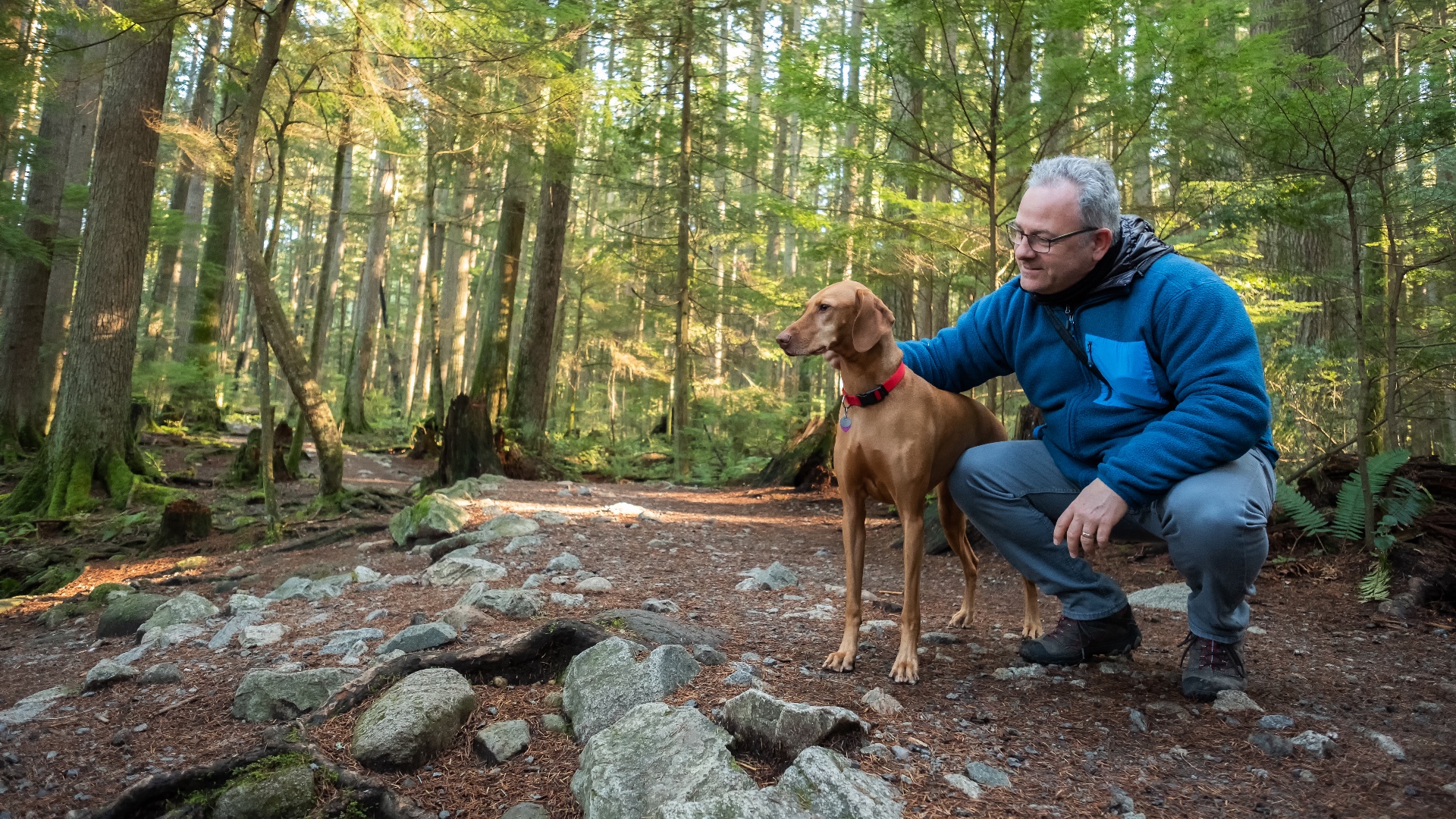
Do you struggle to help your nervous or reactive dog stay calm when you're out and about? If so, you're not alone.
Reactive dogs have an overreaction to common stimuli in their environment. It could be the doorbell that triggers excessive barking or a passerby that causes them to want to lunge and growl.
It can be a challenging issue to deal with, which is why knowing how to calm a reactive dog and make life less stressful for them (and you!) is so important.
To help make passing other dogs while you're out on a walk that much easier, Piper Novick from Happy Dogs Training has put together a useful Instagram video in which she reveals one of her favorite simple tips.
"Nothing is better than exploring in nature with your dog," says Novick, "but it's likely you'll run into other hikers with dogs too.
"It's critical that you have a protocol to handle these moments, especially if your dog is shy or anxious."
In the video, Novick is filming her fellow trainer, Benah, as she takes two dogs out for a walk.
"Benah notices a dog approaching and gives her dogs a trained turn cue, letting them know that they're stepping off the trail," she explains.
Climbing up onto a dirt mound with the two dogs to create some distance, Benah scatters a few of the best dog treats on the ground.
"Once they're off the trail, Benah gives a scatter cue and her dogs anticipate foraging for treats in the brush. While the other dog passes, Benah continues delivering scatters for each dog."
You'll notice in the video that while Benah does turn around to say hello to the hiker and dog that are passing by, the majority of her attention remains on her two dogs.
When her dogs finish their scatters and the other dog has fully passed, Benah releases her pups and the walk continues.
"Not only does this protocol keep you and your dog safe, but it also teaches your dog that unfamiliar dogs are a cue to check in with you," explains Novick.
One of the most common loose leash walking mistakes you can make with your dog is not putting in the correct foundations — which is why Novick's tip is so brilliant.
For further advice and support when it comes to working with your reactive or nervous dog, we recommend reaching out to a professional trainer.







